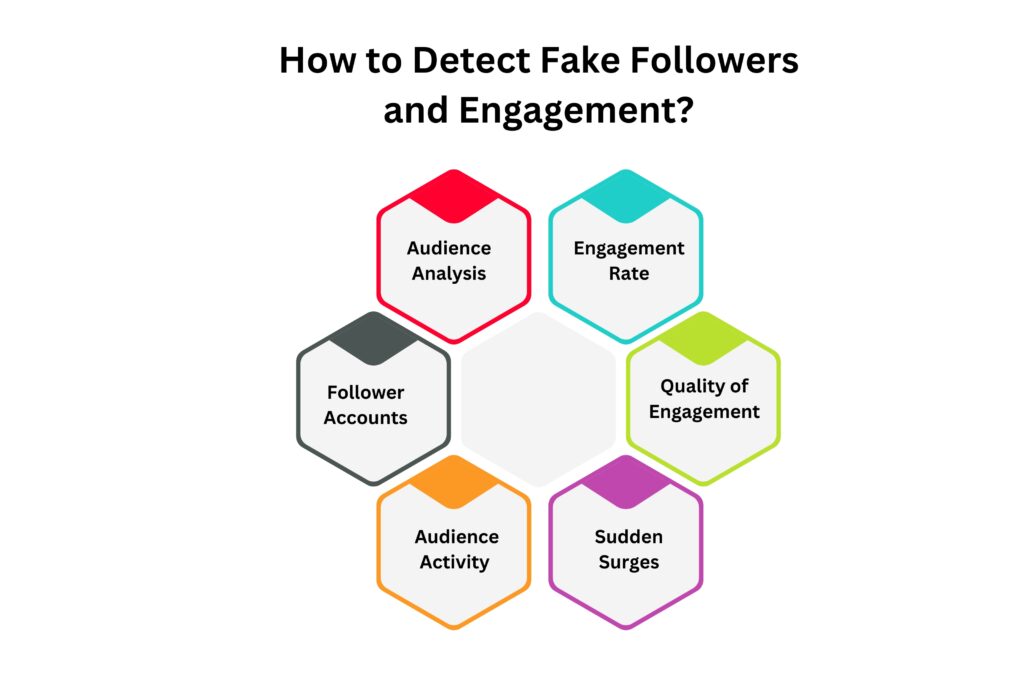In influencer marketing, where reach and engagement are often termed as the base of success, the specter of influencer fraud looms large. As brands increasingly turn to influencers to connect with their audiences, the rise of fake followers and engagement metrics has become a significant concern.
This blog explores the world of influencer fraud, exploring its various forms, the impact it has on campaigns, and most importantly, strategies to detect and combat fake followers and engagement for a more transparent and authentic influencer collaboration.
Contents
What is Influencer Fraud?
Influencer fraud refers to the tricks of follower counts, engagement metrics, and other performance indicators to create a false impression of an influencer’s popularity and influencer. This deceptive practice undermines the authenticity of influencer campaigns and can lead to wasted marketing budgets and diminished brand credibility. There are several forms of influencer fraud, including:
1. Fake Followers:
Influencers purchase fake followers to artificially inflate their audience size. These purchased accounts are usually inactive or bot-driven and do not contribute to genuine engagement.
2. Engagement Pods:
Some influencers join engagement pods, where participants engage with each other’s content inorganically to boost likes, comments, and shares. While engagement may appear high, it lacks authenticity.
3. Comment Bots:
Automated comment bots flood an influencer’s posts with generic or irrelevant comments, creating a façade of engagement without genuine interaction.
4. Engagement Buying:
Influencers can buy likes, comments, and shares to create an illusion of high interaction levels. This can mislead brands into believing they’re working with highly engaging influencers.
The Impact of Influencer Fraud on Campaigns
The consequences of falling victim to influencer fraud can be significant:
1. Wasted Budgets:
Brands invest money in influencer collaborations with the expectation of reaching a genuine audience. Fraudulent influencers offer little to no return on investment.
2. Diminished Credibility:
Collaborating with influencers with fake followers erodes brand credibility, as consumers can detect inauthenticity and may distance themselves from the brand.
3. Misguided Strategies:
Relying on fake engagement metrics can lead brands to develop misguided marketing strategies that do not resonate with their actual target audience.
4. Lost Opportunities:
Brands may miss out on authentic influencers with smaller but highly engaged audiences who could have yielded better results.
How to Detect Fake Followers and Engagement?

As the influencer landscape evolves, so do the strategies to combat influencer fraud. Here are effective methods to identify fake followers and engagement.
1. Audience Analysis:
Examine an influencer’s followers’ demographics for inconsistencies. Sudden spikes in followers from countries unrelated to the influencer’s content may signal fake accounts.
2. Engagement Rate:
Calculate the engagement rates ( like + comments/followers) for an influencer’s posts. Suspiciously high engagement rates in comparison to their follower count may indicate fraud.
3. Quality of Engagement:
Evaluate the quality of comments and interactions. Genuine comments are varied, relevant, and reflect a meaningful connection to the content.
4. Sudden Surges:
Rapid increases in followers or engagement that are not accompanied by a correlating increase in content quality or collaboration opportunities may raise red flags.
5. Audience Activity:
Analyze the timing and consistency of engagement. If an influencer’s posts receive engagement at unusual hours or times, it might suggest automated engagement.
6. Follower Accounts:
Manually review a sample of an influencer’s followers. Look for profiles lacking profile pictures, posting history, or interaction with other users.
Ensuring Authentic Influencer Collaborations
1. Thorough Research:
Investigate potential influencers thoroughly. Use influencer marketing platforms and tools to gain insights into their audience demographics and engagement history.
2. Micro-Influencers:
Consider working with micro-influencers who have smaller but highly engaged and authentic followings. They are less likely to engage in fraudulent activities.
3. Vet Collaborations:
Collaborate with influencers who align with your brand values and have a history of genuine engagement. Review their past campaigns for consistency and authenticity.
4. Conversation and Transparency:
Discuss metrics, expectations, and the importance of genuine engagement with influencers before collaborating. Open dialogue fosters transparency.
5. Use Tools:
Leverage tools that specialize in detecting fake followers and engagement, such as social media audit platforms that analyze an influencer’s audience authenticity.
The Road to Authentic Influencer Marketing
As brands strive to build genuine connections with their target audiences, the battle against influencer fraud becomes crucial. Detecting fake followers and engagement requires vigilance, education, and a commitment to transparency.
By employing advanced analysis, collaborating with micro-influencers, and maintaining open communication with influencers, brands can safeguard their reputation and ensure that their influencer marketing campaigns resonate with authenticity and credibility.
In the world of influencer marketing, the pursuit of authenticity remains the true north for brands seeking meaningful connections in the digital age.
Frequently Asked Questions (FAQs)
-
What is influencer fraud?
Influencer fraud refers to dishonest practices where influencers artificially inflate their follower counts, engagement metrics, or other aspects of their online presence to appear more influential than they actually are.
-
What are some common signs of fake followers?
Common signs include profiles with no profile pictures, limited actively, generic usernames, and a high number of followers but very few posts or interactions.
-
What about fake engagement? How can I identify that?
Fake engagement includes likes and comments from bots or inactive accounts. To identify it, look for comments that seem generic, irrelevant to the post, or repetitive. Sudden spikes in engagement can also be a red flag.
-
How can I prevent influencer fraud?
Prevention involves thorough vetting of influencers, setting clear expectations, and including fraud-detection clauses in contracts. Regularly monitor influencer performance and be vigilant for any suspicious activity.


